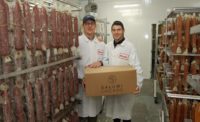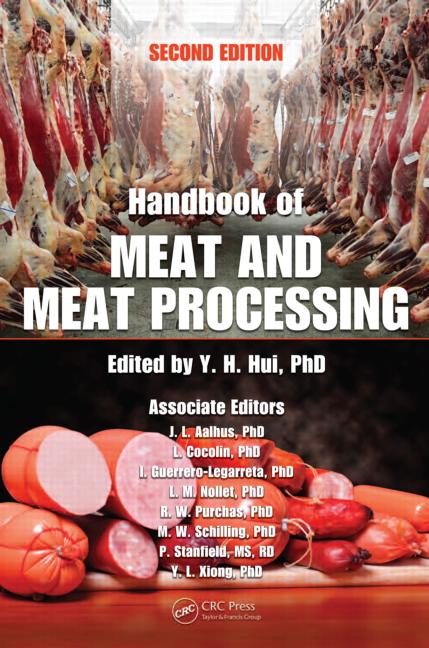Fat chance
Processors are turning to fat analyzers to maximize the efficiency of the product stream.

Products such as ground beef, sausages or hams are dependent on many factors to result in a delicious end product. Fat content cannot be ignored or dismissed in that process.
Ground beef is sold in terms of fat/lean content, so every package has to meet the labeling requirements. An 80-20 package of ground beef that’s actually 90% lean costs the processor money through waste, and a package that is 70% lean is misleading to the customer and violates federal labeling laws.
Sausages and other further-processed meats have very specific recipes, so a variation in fat content will result in product quality that changes from batch to batch. Any fat irregularities in a ham can affect the curing process, which in turn can lead to a lower-quality product.
The use of fat analyzers, either in-line or in a lab, can help to even out some of the natural fat irregularities in meat. There is a variety of technology available at different price points, so a company of almost any size can find an affordable solution that fits into its process.
Any company with a grinding operation needs to keep track of fat levels. This applies not only to ground beef but also products such as burger patties, meatballs or sausages. In the largest and most automated fat-analysis systems, the equipment is able to automate product blending by mixing the right amount of materials from multiple inputs in order to achieve the desired weight and fat levels. Sausage processors can end up with a more standardized product, which then results in a uniform drying time for every batch.
A different application of fat-analysis technology would be for hams. A machine could X-ray a joint and measure the fat content of the meat. By analyzing the fat content and marbling of the specific joint, the curing process can be adjusted, which will reduce the number of defective products. That could result in a significant cost savings for a ham processor, considering the curing time for hams is measured in months if not years.
Fat analyzers are available as in-line systems, at-line systems or laboratory systems. The desktop lab equipment may be slower than equipment on the floor, but it has the advantage of lower cost. However, those analyzers require a spot sample to be taken from a larger batch, which is finely ground and prepared to remove any air pockets from the sample. Despite the accuracy, it may be difficult to determine if that small sample is truly indicative of a larger batch. However, the equipment tends to be simple to operate, and a small plant that uses it can enjoy the benefits of standardized batches and more consistent final products without having to pay a premium. Like most modern equipment, the results can be viewed through a company’s intranet system, so a QA manager is able to monitor the fat levels or other measurements without having to disrupt operations on the plant floor.
In-line analyzers continue to be popular for processors of all sizes. Unlike the other forms of fat analysis, the equipment does not necessarily require the preparation of samples, as the meat passing through the machine is being continually scanned. These analyzers can also eliminate or at least reduce downtime by correcting the lean/fat ratio automatically without having to stop production. As an added benefit, in-line fat analyzers can also detect foreign objects in the meat, adding another layer of food safety to the operation.
Many analyzers will scan the surface of the meat as it passes through the system and can determine the fat content. The depth to which they scan varies by the method used to reflect the light. Near-infrared (NIR) is commonly used by fat analyzers, and it can scan anywhere from 2mm to 20mm or more, depending on the system.
Other companies are using dual energy X-ray technology in their fat analyzers to scan all material. Those systems, however, are more expensive than NIR models and require more floor space, so their use has been limited to larger processing plants. The X-ray technology is the only scanning technology that is capable of scanning 100 percent of the meat, fresh or frozen. Other types of scanning technology only work on fresh meat.
Operation of the fat analysis equipment, regardless of the type, does require regular maintenance and calibration to ensure maximum accuracy. While some of the available equipment does use radiation and does require specific training in that regard, workers who operate it in a cautious manner can do so without fear of exposure.
Looking for a reprint of this article?
From high-res PDFs to custom plaques, order your copy today!










